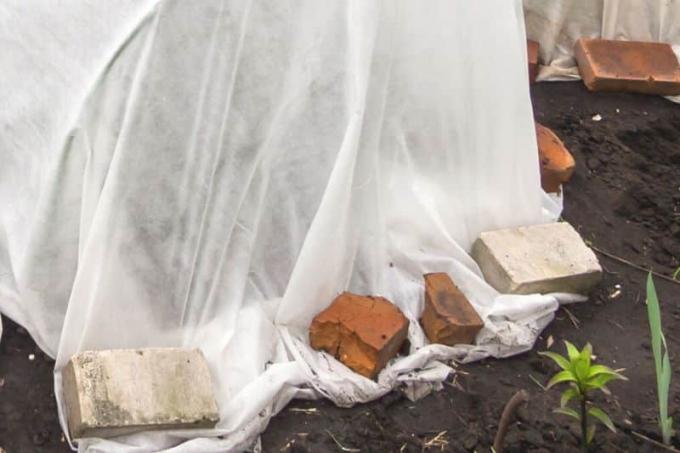
The zucchini loves the heat. In good conditions, a single plant can support an entire family. However, when it gets too cold, your help is needed. You should not fall below these temperatures for your zucchini, especially at night.
In a nutshell
- Zucchini very heat-loving
- Growth stops at temperatures below ten degrees Celsius
- Danger of rotting in cold weather
- protect covers
Table of contents
- Site conditions for zucchini plants
- ideal temperature
- young plants
- cold damage
- Protect zucchini from cold
- Zucchini varieties less susceptible to cold
- frequently asked Questions
Site conditions for zucchini plants
The zucchini (Cucurbita pepo subsp. pepo convar. Giromontiina) develops excellently at these locations:
- sunny to semi-shady
- sheltered from the wind
- permeable
- nutritious
- without the risk of waterlogging

ideal temperature
Zucchini grow best in mild temperatures:
- during the day approx. 25 degrees Celsius
- 15 degrees Celsius at night
A notice: At temperatures below ten degrees Celsius, the zucchini plant stops growing.
young plants
Bring the zucchini plants outdoors first, when there is no more threat of night frost. Wait for the ice saints and plant the courgettes in mid to late May at the earliest to protect them from low temperatures.
A notice: zucchini are heavy feeder. They should only be grown on the same bed every four years. Onions, lettuce and beans are suitable as bed partners.
cold damage

If it gets too cold at night, there is a risk that
- Young plants die
- the plant stops growing and fruiting
- the fruits turn yellow and begin to rot from the top
Protect zucchini from cold
If a cold snap is still imminent after planting young plants, fleece and protective film help to protect the zucchini from temperatures that are too low. Garden fleeces are very fine. They let air, light and moisture through. When it's cold, moisture in the air condenses under the fleece. During this process, heat is released, which the small plants benefit from.
If the thermometer falls below freezing, ice crystals form from the water droplets. If the leaves do not come into direct contact with the fleece, the plants are protected from freezing for a while.

Tip: Place bricks under the edges of the fleece. This increases the air cushion over the plants and prevents the plants from coming into direct contact with the fleece.
Zucchini varieties less susceptible to cold
Breeders have had success launching some varieties that are less sensitive to cold:
| variety | Characteristics |
|---|---|
| Black Forest F1 | – climbing plant – dark green, small fruits – elongated, cylindrical shape – white pulp – mildew resistant |
| Caserta F1 | - bushy growth – Round green fruits with a smooth skin – cylindrical shape – resistant to many zucchini diseases |
| Cavili F1 | - bushy growth – green-white, cylindrical fruits – light flesh – pleasant taste - less watery – low susceptibility to disease |
| Eightball F1 | - bushy growth – small spherical fruits – dark green skin with orange speckles – Flesh light and tender - very delicious - Fruits are harvested the size of a tennis ball |
A notice: Note that zucchini are generally sensitive to low temperatures. Even hardy strains can take damage in cold weather.
frequently asked Questions
Dig in the edges on one long side and weight the fleece down with bricks on the other sides. In this way, you can simply roll up the garden fleece on warm days so that the plants can enjoy the sun, light and warmth.
For courgettes on the terrace, always choose a place that is sheltered from the wind and cold and has plenty of sun. If late frosts threaten, you can put the small plants back inside. Larger zucchini plants should be covered with a fleece during cold nighttime temperatures. Also wrap the tub in bubble wrap to protect the roots.
Yes, the fruit should be stored cool, but not below eight degrees Celsius. So they don't belong in the fridge. Also note that zucchini should not be kept next to tomatoes or apples. Both emit ethylene, which causes nearby fruit to ripen and spoil faster. However, you can freeze zucchini perfectly.

